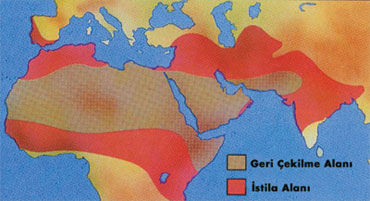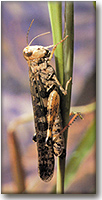Bigotry: The Dark Danger
The Miracle of Migration in Animals
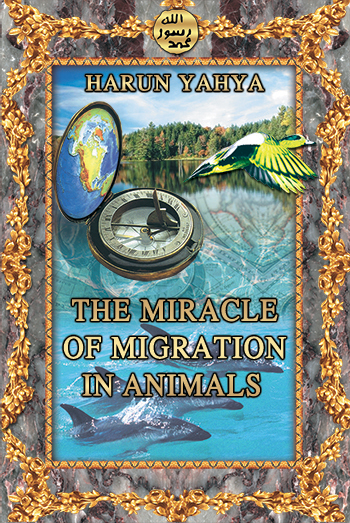
DOWNLOAD THE BOOK
CHAPTERS OF THE BOOK
< <
3 / total: 7
Part 2 - Animals Migrating in The AirA variety of fish, mammals and even insects make remarkable migratory journeys. As a group, however, the most active creatures in the world are birds. Even up-to-date transportation vehicles are unable to match birds in their movements. Long Distance Travelers
Their flying skills and the reduced friction in the air they move through make birds the swiftest moving creatures on the planet. The speed of the cheetah, the fastest animal on the ground over short distances, cannot exceed 80 kilometers (50 miles) an hour. The fastest fish in the sea, the sailfish, can reach 105 kilometers (65 miles) an hour over short distances. But spine-tailed swifts can fly at a speed of up to 160 kilometers (100 miles) an hour.6 You might think that such speeds would be exhausting for migrating creatures over long distances, but this is not generally the case. Coming from a very long journey overland or sea, birds sometimes show signs of fatigue, of course, but they do not experience serious problems unless they have faced adverse winds. Even small landbirds are so little affected by their journey after crossing the Gulf of Mexico at its widest point, they continue flying inland without stopping.7
With birds as with other animals, some members of the same species migrate while others lead a settled existence. For this reason, evolutionary scientists are not able to explain the roots of migration. For instance, various kinds of wood warblers and flycatchers are wholly migratory, most woodpeckers are permanent residents, but Blue Jays are partial migrant. If, as the evolutionists claim, these creatures have developed such a mechanism to survive, and their bodies have developed appropriate systems through various coincidences, why don't all members of the same species exhibit the same behavior? How can the residential individuals ensure the survival of the species? From the perspective of the evolutionists, this situation defies explanation. And so there is only one true explanation: God has created this characteristic in migrating creatures. Animals in the wild are evidence of God's power, and that He is the Almighty, Who creates incomparably. Those who persist in ignoring this evidence and who look for a creator other than God are clearly misguided. In a verse of the Qur'an, God tells of such people: Say: "He is the All-Merciful. We believe in Him and trust in Him. You will soon know who is clearly misguided." (Surat al-Mulk, 29) How Do Birds Decide to Migrate?
Experiments have shown that the lengthening of the day stimulates animals in different ways. Light primarily affects the hypothalamus, the nerve center in the brain that controls hunger and satiety. At the same time the neighboring areas of the brain are stimulated, triggering secretion of prolactin in particular, and corticosterone and sex hormones from the adrenal glands. These hormonal changes cause an extreme increase in birds' appetite, and they begin to feed intensively to build up the fat deposits necessary for migration, eating 40% more than at other times of the year. The fats they accumulate are stored as large deposits under the skin, in flight muscles, and in the abdominal cavity. When the birds are not migrating, their body weight consists of 3 to 5% fat, but at the time of migration, the rate increases to 15% in birds flying short to medium distances, and 30 to 50% in those flying long distances. These fat deposits fuel the flying muscles and also ensure the least fatigue on long distance flights.8 Proper timing is very important for the commencement of migration. In spring, if a bird postponed its preparations for migration and waited until food in the breeding ground was easily obtainable, it wouldn't have enough time to migrate, mate, incubate the eggs and feed its young when the food supply did become plentiful. The timing of birds' yearly migration concurs with the season when the parents will have access to the most abundant food supply for their nestlings. Similarly, if birds delay their departure from the breeding ground until chilly autumn weather drives them out, there won't be enough time for the necessary physiological changes (such as storing energy by weight gain). This would mean extinction for the species. However, there are no mishaps, and birds somehow "choose" the right time to migrate with perfect accuracy. Piecing together all these facts—that all these mechanisms that birds possess work perfectly; that they make the necessary preparations for migration; and that mechanisms as yet not fully understood let them find their way during migration—a finely created system clearly emerges. It is ridiculous to imagine that such a delicately planned system, so perfectly suited to the bodies of birds, could have developed as a result of coincidental mutations. Birds' migration system points to the existence of a Creator, showing that they are created by God. Birds' Expertise in Estimating Altitude and Weather Forecast
In spring, the bogong caterpillars feed in the grassy pastures of Queensland and New South Wales. When the weather grows warmer in summer, they pupate and emerge as little grayish-black moths. Instead of bearing the scorching summer heat, they start out on a long journey for the Australian Alps, where millions of these long-distance travelers spend the summer, congregating in rock crevices and caves and flying out only in the evening. Once they reach the mountains, they spend the summer there in a state of suspended animation, making use of the fat reserves they accumulated when they were caterpillars to stay alive.9 To reach the peaks of the Alps, these little creatures must be able to predict the arrival of cold fronts, moving in a southeasterly direction, that will help carry them to their summer resting ground. Scientists believe that these insects' ability to detect changes in barometric pressure or air ions enables them to make accurate predictions.
Just as a bird uses its pressure sense for predicting altitude, it is also helpful in forecasting the weather. A sudden fall in atmospheric pressure occurs just before most winter storms, and birds perceiving this pressure drop prepare for the difficult journey ahead. A wrong guess can prove fatal for migrants. When spring comes to the Northern Hemisphere, birds get ready to migrate only when the temperature rises, the pressure falls and a southerly wind is blowing.10 Why Do Most Birds Migrate at Night?
Birds conduct most of their activities during the day, but choose to make long journeys at night. Shorebirds and small birds like flycatchers, golden orioles, most kinds of sparrow, warblers and fieldfares are classic night migrators. At night, there is a surprising lot of activity in the sky. A telescope aimed at the sky during a full Moon observed an estimated 9,000 birds per hour passing by. These night migrations begin one hour after sunset, peak just before midnight, and fall off towards daybreak. Birds' nocturnal migration is advantageous in a number of ways. Most importantly, in this way they can evade their enemies like hawks and falcons. A large number of migrating species are small and have weak flying capacity, so it is safer for these birds to fly in the dark. But night migration is not just for safety alone, for some coastal birds—powerful fliers that can go over the ocean non-stop for 3,200 kilometers (2,000 miles)—also migrate at night. Another reason why birds choose night for travel is that birds feeding during the day usually have a very rapid digestion. Consequently, they have to eat at short intervals, and these calories must be deposited in their body in the form of fat. Were small migrators to make long flights during the day, they would be exhausted on arriving at their destination, and since they cannot forage at night, they would have to wait until the next morning. As a result of being unable to obtain energy, many would probably be unable to survive in a cold environment. For this reason, these creatures act in a very programmed fashion, feeding by day and migrating at night, resting at sunrise and continuing on in this cycle. Although this has not been proven, one advantage of traveling at night may be the cooler air temperatures. Birds that flap their wings constantly in sunlight run the risk of overheating. Night travel prevents this danger. Moreover, the energy they expend also produces a certain amount of heat, which birds reduce by losing some water from their skin by evaporation and by panting—rapid breathing which increases the evaporation rate of water from the mouth and throat. Along with their fat deposits, birds probably lose body water while flying non-stop. Accordingly, on night migrations they can take advantage of the cooler air to lower their body temperature and reduce water loss to a minimum, which affords them increased flying distance.
Besides the species created with a suitable body structure for night migration, there are also birds suited to daytime migration, such as ducks, cranes, seagulls, pelicans, hawks and swallows. Storks and condors that glide can fly by day only, because they depend on rising heat currents or winds up the slope of mountains or hills to help them stay aloft. Migrating birds do so as their body structures and lifestyles permit. God created these creatures equipped with the necessary skills. All the feats they accomplish are evidence of God's existence and might, and each one of their tasks serves to exalt God, as He makes known in a verse of the Qur'an: Don't you see that everyone in the heavens and Earth glorifies God, as do the birds with their outspread wings? Each one knows its prayer and glorification. God knows what they do. (Surat an-Nur, 41)
Advantages of High-Altitude Flight
Some birds migrate at seemingly impossible altitudes. For instance, dunlin, knot and certain other small migrating birds fly at a level of 7,000 m (23,000 feet), the same altitude used by aircraft. Whooper swans have been seen flying at 8,200 m (27,000 feet). Some birds even reach the stratosphere, the layer of thin atmosphere, at an altitude of between 8 and 40 kilometers (5 and 25 miles).11 Bar-headed geese cross the Himalayas at an altitude of 9,000 meters (29,529 feet), close to where the stratosphere begins.12 It is not known exactly how birds determine the altitude at which they fly, but high flying does give a number of advantages. It may let them locate familiar landmarks, fly over fog or clouds, and surmount physical barriers like mountain ranges. At very high altitudes, the air is cooler and this means reducing water loss for the birds.13 Although birds gain advantages from flying high, there could be certain disadvantages. For example, concentrations of oxygen at this altitude are less than a third of what they are at sea level. However, birds do experience no difficulty because their systems are created to cope with breathing at high altitudes. Geese and other birds have very efficient forms of oxygen-carrying molecule hemoglobin in their blood to deal with this low level of oxygen and in addition, there is a high density of capillaries to transport this oxygen to their flight muscles. The "avian lung" structure unique to birds moves the air in their lungs in a single direction, meaning that the bird constantly breathes in clean air and thus can use oxygen in the atmosphere in the most efficient way. How migrating birds manage to tolerate the cold is still unknown. At high altitudes, the temperature can fall below -50°C (-58°F), and migrating birds may have to endure these freezing conditions for a number of days.14 Every living creature is created to have enough strength to deal with the difficulties it may encounter throughout its life. Geese can fly at an altitude where there is little oxygen and sometimes at freezing temperatures thanks to the special structure of their bodies. This structure is not the product of unconscious coincidences—in short, evolution—but of God, Supreme Lord of the heavens and the Earth, Who has created them with perfect features. God knows the beginning and end of everything and has created all creatures with perfect characteristics in every respect: The Originator of the heavens and earth. When He decides on something, He just says to it, 'Be!' and it is. (Surat al-Baqara, 117)
Advantages of Flying with Fat Reserves
Before migrating, as already pointed out, birds consume as much food as possible and convert these reserves into fat, which is the most ideal fuel. Metabolizing one gram of fat releases twice as much energy as the same quantity of protein and carbohydrate. In the course of migration, birds use up this accumulated fat, but the weight of fuel they carry presents certain difficulties. For example, the red-necked stint carries a burden of fat exceeding 90% of its normal body weight. The bird burns up this fat gradually on its non-stop migration journey. To be able to carry this excess load to a given altitude, a bird burns up a significant amount of fuel. When it reaches the necessary altitude, the bird's most efficient method is to continue its journey without stopping until all its fat reserve is used up. If it lands before using this supportive energy, it may encounter serious risks. For example, it may come down some place where it can't refuel quickly enough to continue. For this reason, it is always more advantageous to store reserve energy to complete the flight.15 Every year, migrating shorebirds set off on a flight of 12,000 kilometers (7,450 miles). Over the course of their lives, the total distance they cover on these journeys is equivalent to the distance to the Moon and back. As the month of March approaches, shorebirds begin their preparations for migrating to their breeding grounds in Siberia. First, they start to consume extra amounts of food. In one day, a shorebird only the size of a glass of water can consume about 40,000 invertebrates. Night and day, it alternates between eight hours of eating and four hours of rest, and accumulates between 50 and 100% of its body weight in fat.16 Migration begins in April and May. The birds fly non-stop for three days and nights, covering a distance of some 1,500 kilometers (932 miles) per day. At the end of this three-day flight, having used up their entire store of fat, they stop along their migration route in specific regions of countries like Japan, China and Russia to replenish their lost reserves. In the course of migration, shorebirds gain and lose weight a few times; and after flying an enormous distance of some 12,000 kilometers (7,450 miles), they arrive in Siberia at the beginning of June. American golden plovers follow an ocean route of 3,840 kilometers (2,400 miles) from Nova Scotia to South America, flying for about 48 hours without stopping. In spite of the difficult journey, each bird uses up only four grams of body fat. The ruby-throated hummingbird weighs about four grams and uses up less than one gram of fat in its single 800 kilometers (500 miles) flight across the Gulf of Mexico.17 On close examination, these little birds reveal themselves as a miracle of creation. They make perfect journeys under conditions that no human could ever cope with. God has created birds with all these characteristics, proof of His unbounded intelligence and knowledge.
Finding the Shortest Migration Route
Depending on circumstances, birds use various clues in navigation. Missing one of these clues, they orient themselves by another. Birds can generally read landmarks such as coastlines, rivers and mountains. In addition, experiments have produced ample evidence of their making use of the Sun and stars. To illustrate how complex it can be to conceptualize birds' direction-finding skill, consider the black-winged stilt. With the arrival of spring in their winter habitat of West Africa, these birds leave for Siberia. They fly non-stop along the East Atlantic shore for a total distance of 4,300 kilometers (2,600 miles) until they reach the Dutch Wadden Sea. The route the birds take on this journey is marked as A-B-C in the illustration on the opposite page. Without doubt, a superior characteristic enables them to find their way to such distant regions. But when we look at the route the birds follow, a much more remarkable ability is revealed. Between A and C in the drawing, two routes are indicated. You can see that the unbroken line showing the A-B-C path is shorter than the dotted line. The A-B-C line in fact shows the shortest route between Aand C. We can compare this line to a line connecting two points on an orange. The route shown by the dotted line would be followed to get from Ato C using a magnetic compass. In other words, a pilot flies from town A according to the angle that the airplane's compass shows for town C. If he keeps on without changing course, eventually he will arrive at town C. In fact, these two different routes correspond to concepts long known in seafaring. The shortest distance between two points on a sphere like Earth, as shown above, is termed "orthodrome." The journey from one point to another using a compass follows a different route, and this is termed "loxodrome." A loxodrome cuts each meridian with the same angle, and the meridians join at the poles. That is, they are not straight lines. A journey following a loxodrome is more oblique than the "straight" road and therefore takes longer.
Pedro Nunes first drew a loxodrome in 1550 and believed it was the shortest distance between two points on the Earth's surface. In other words, a loxodrome and an orthodrome were Every spring, millions of shorebirds leave their wintering grounds in West Africa and fly non-stop to Europe's East Atlantic coast—their first stop. (B) From there, they head for their breeding grounds in Siberia. (C) In the course of this flight, they follow the shortest route between two points on a sphere, known as the orthodrome. thought to be one and the same thing, and this assumption persisted for a long time. After many years, the difference was acknowledged. Only in the nineteenth century did it become possible for ships to follow orthodrome rather than loxodromebased routes19. To the astonishment of scientists, however, when blackwinged stilts migrate, they do not follow the loxodrome route that one using a compass would normally expect. They follow an orthodromic route, which is shorter and more efficient—but very difficult to determine, since it is possible to trace the shortest distance between two points on a spherical shape only when the whole of the sphere is visible. For example, while it is simple enough for us to join two points on the surface of an orange, we can't possibly know the shortest route from where we are presently to Sydney, Australia. Similarly, however high up a bird may fly at point A, it cannot visually determine the shortest route to point C, thousands of kilometers away. But birds are more successful than a pilot equipped with a compass at finding the shortest (i.e. orthodrome) route to place where they have never been. According to researchers, birds achieve this thanks to a "sun compass." At every meridian they pass when flying east, birds have to adjust their route by a 1o angle of deviation. It is estimated that birds use the Sun's constantly changing position in the sky. Thanks to this complex navigational ability, they can reduce traveling risks and the amount of energy they use to a minimum. Finding the shortest route, as birds have been shown to do by using the Sun, is something we humans can do only after solving complex equations:
The equation for finding the shortest distance between two points on a spherical surface—that is, the orthodrome route—appears on the opposite page.20 For most people, these complex mathematical formulae have no meaning. But the black-winged stilt can fly without losing its way, due to its ability to determine the route arrived at through similar calculations. Undoubtedly it is not a result of coincidence that a bird is programmed to fly on such a calculated route. Possession of this extremely complex knowledge points not to coincidence, but to creation. In a verse of the Qur'an, God says this of those who try to prove the contrary: [Hud said:]"… Do you argue with me regarding names which you and your forefathers invented and for which God has sent down no authority? Wait, then; I am waiting with you." (Surat al-A'raf, 71) Benefits of Forming a FlockRadar has shown that daytime migrators have more of a tendency to fly as a flock than do night migrants. This reinforces the idea that flock formation is to discourage enemies. It also shows that there is certain cooperation and communication between birds. In a verse of the Qur'an, God tells us that birds as well as people form "communities:" There is no creature crawling on the Earth or flying creature, flying on its wings, who are not communities just like yourselves—We have not omitted anything from the Book—then they will be gathered to their Lord. (Surat al-An'am, 38)
In species that form flocks, a special calibration that enables the younger fledglings to fly at the same time as the adults. The chicks do not have the capacity and strength to migrate as soon as they are hatched, but must soon be able to keep up with the flock. For this reason, while the young are growing, the parents molt and lose their wing feathers and thus are also unable to fly. While the young are reaching the stage where they can fly, the adults' feathers gradually grow back. This miraculous c1oordination allows both parents and young to migrate at the same time. 21 The perfect synchronization in physical changes in two separate generations cannot be pure coincidence. This is an example of how God the Omniscient creates a perfect harmony in living beings. Don't you see how He created seven heavens in layers, and placed the Moon as a light in them and made the Sun a blazing lamp? (Surah Nuh 15-16) Why Birds Fly in V Formations
The leading birds in a "V-shaped" flock reduce the amount of air resistance for the birds behind them. In this way, birds flying as a flock save energy and can usually fly at greater speed than birds flying alone. When migrating birds fly in a staggered pattern, each is subjected to the same amount of air friction as its neighbor. The advantage of this method of flight stems from what pilots call the "wingtip vortex." An airplane's wings provide the majority of the lift, but also cause drag. Air flowing over the top of a wing also tends to flow inward toward the fuselage, while air flowing underneath the wing tends to flow outward. Along the trailing edge of the wing, these two airflows meet and form a rotating column of air extending out from the wingtips. On humid days, cold, moist mornings or when flying through mist, this so-called wingtip vortex is visible to passengers sitting next to the wing.22 There are vortices on both sides of the wing. Higher air pressure below the wing and the lower pressure above cause this rotating column of air. The air's natural tendency to flow from high pressure to low pressure creates airlift around the edge of the wing, and birds utilize this flow on their journeys. As in human bicycle races, a bird that finds itself at the rear must struggle continuously against a downward current. In flying, this is the equivalent of climbing a hill. Provided that their wings do not touch, it is more advantageous for a bird to fly by positioning itself right next to another bird. This way, the bird can benefit from the maximum lift—but only with one wing. For this reason it has to keep the wing in line, close to the wing of the other bird. Each of the birds flies in the upwash of its neighbors. This is an effect similar to flying in an upcurrent, using less lifting power. If this is so, then why do birds fly in a V formation, rather than side by side line abreast?
The answer lies in the sacrifice any migrating bird makes for the sake of the others. Flying in a line abreast formation would not ensure an equal energy saving for each bird, since the birds in the center of the line would have twice the advantage of the birds at the tips, since they would be flying in an upwash field created by the birds on both sides. The V formation restores the balance. In a regular V formation, each bird expends the same amount of energy. If one member moves ahead of the V line, it must use more power to keep up with the flight and its speed falls until it is back in line. In this way, the formation is self-stabilizing. Even young birds new to flight adjust immediately to it. The energy saved as a result is quite significant. According to scientific reports, a flight of 25 birds can have a 70% range increase over a solo bird using the same amount of energy.23 As we have seen, every detail in nature reveals remarkable intelligence and planning. This is a sign of God's absolute supremacy over nature: It is God Who created the seven heavens and of the Earth the same number, the Command descending down through all of them, so that you might know that God has power over all things and that God encompasses all things in His knowledge. (Surat at-Talaq, 12) Birds flying in V formation make things much easier for one another. By not placing handicapped or weak birds at the fore—the only place in the V that is not advantageous—they help them get strength. The efforts of one creature to benefit another provides a clear answer to the evolutionists, who claim that animals are selfish and only interested in what benefits them as individuals.
God, Creator of every animate or inanimate form of existence on Earth, has created the migratory birds and knows their every need. Birds that move with God's inspiration show the falsehood of evolutionary claims and provide evidence of the truth of His creation. Why do birds, while flying on difficult journeys for thousands of kilometers, enable others to save energy? Why does each bird take its turn leading? Why doesn't one ever create any problems or disturb the order of the flock? Going by the evolutionists' claims, each creature should only act to its own advantage, but this is not the case. Birds complete extremely arduous journeys with ease by helping one another. God inspires in each creature the tasks it will undertake, and it complies perfectly by submitting willingly to God's greatness. Why Migrating Birds Have Long Wings
In addition, the outer primary feathers (that, together with the inner feathers, effectively thrust the bird forward in flapping flight) tend to be longer in migrating birds, lending the wings a pointed rather than a rounded shape. This shape can be observed in a number of migrating birds. For example, the black-naped oriole, which travels between Siberia and India, has pointed wings in common with the albatross, the falcon, the swift, various species of shorebird and tern, and other long-distance travelers.24 Aerodynamic Advantages of Curved Wings
There is an important reason for curvature in birds' wings. Close observation reveals that the wings of aircraft have this same curvature. An aircraft's wing is designed for flight and has a special shape known as an airfoil, also found in fans and propellers. Airfoils create a lifting force when subject to airflow. An airfoil has a thicker, rounded leading edge and a very fine trailing edge. Between the leading edge and the trailing edge, both the upper and lower surfaces of the wing are curved. The upper surface usually has a greater curve than the lower and, in aviation terminology, this humped surface is known as "camber." Airfoils make use of the Bernoulli's principle, according to which an increase in the velocity of a stream of fluid results in a decrease in pressure. As the upper surface of the wing has greater camber than the lower, the air flows faster over the wing than under it. This lowers the air pressure above the wings, and the difference in pressure between the upper and lower surfaces causes lift.25 Utilizing the Wind in Flight
Radar research conducted during both spring and autumn migrations has shown that the weather and in particular, heat, plays an important part in a bird's decision as to when to start migrating. Wind is one important factor influencing the start of flight. In spring, they are the winds blowing from the south and from the north in autumn. Clear weather conditions that let birds easily determine their route from the sky is a second important factor. For gliders like the falcon, the osprey, the eagle and the vulture, proper wind conditions are essential. For falcons that migrate along the mountains in the eastern United States, the second day after the passing of a cold front is ideal, since steady northwesterly-west winds lift the gliding birds above the mountain ridges that run north to south. At the same time, the migrating birds can also glide in the thermals that rise from different parts of the Earth's surface. It is estimated that if a broad-winged falcon were to flap its wings in flight, it would use up its accumulated 100 grams (3.5 ounces) of pre-migratory fat in just five days. But by using a thermal's upwardly spiraling air currents to gain altitude before gliding to the next thermal, that same fat deposit can last 20 days—enough to provide the energy needed for the journey of approximately 5,000 kilometers (3,000 miles) the birds make from the Neotropics. Using the thermals that form when the ground heats up, some migrating birds travel to very distant places. Spiraling in these invisible elevators, storks, cranes and pelicans can gain enough altitude to glide hundreds of meters, hardly flapping their wings at all. Since they can usually find another thermal at the end of their glide, they can fly between continents while expending a minimum of energy. Heated air gives off a low-frequency sound that can be perceived by migrating birds from a distance of 3 kilometers (2 miles). Although not all migrating birds make use of thermal heat, these low-frequency sounds help them in other ways, too. For example, the rhythmic sound of ocean waves can be heard even at great distances from the shore. But at a distance where all high-frequency sounds are absorbed, it becomes a low roar. At an even greater distance, these sounds become completely inaudible. If our sense of hearing were as strong as that of birds, we would be able to hear sounds from even hundreds of kilometers away. While this is impossible for us, it's possible for birds thanks to the fact that they can hear extreme infrasound, as low as one cycle every ten seconds. At these frequencies, sound can travel almost unhindered. As well as the infrasound of the ocean, birds can perceive other distant sounds such as wind on mountain slopes and shifting desert sands. Migrating birds may be able to listen to the changing patterns of these distant sounds and use them as acoustic signposts.26 Tactics on the Return JourneySeveral species of migrating birds make their return journeys in the spring, but rather than using the route they followed in the autumn, this time they trace more of an ellipse. Some researchers on migration think that food supply is the basic factor for the difference between these routes. A related study found that birds unable to find nourishment when returning by the same route are unable to breed or even complete their journey. How Do Birds Find Their Way?
Migrating birds seem to know the weather conditions at the place where they're headed and act accordingly. In so doing, they must take a number of points into account, such as the distance to their destination, how fast they will have to fly to arrive at the appropriate time, and what route to follow. It's not yet known what clues birds use to find the location of their target at the end of migration, thousands of kilometers away, although the research conducted has come up with some guesses. Birds are thought to use environmental clues, changes in the Earth's magnetic field, the position of the Sun and the stars, and strong winds, as well as certain smells. However, recent radar studies have revealed that birds fly far above the clouds. From that altitude, it's not possible to see the ground and therefore, it's not very likely that migrating birds can judge which way to go by landmarks. Consequently, birds are thought to have some structure enabling them to react to changes in the Earth's magnetic field, which they use to find their way. Certain cells in a bird's brain contain magnetite, a naturally magnetic mineral. In various experiments, birds fitted with small magnets showed marked loss of navigational ability, and it was understood that they were confused by the artificially created magnetic field. It is doubtless no coincidence that the brain cells contain magnetite, but an indication of a purposeful creation. One other explanation is sense of smell. In reality birds have a less developed sense of smell than other animals. However, research in recent years has shown that some species have a more developed sense of smell, and for this reason the idea has been put forward that migrating birds find their way to their destination with the help of certain smells. Of all possibilities, the Earth's magnetic field is seen as the most reliable guide. Never obscured by clouds, it is ever-present at night and does not change place. Experiments reinforce the idea that the magnetic field is used in animal migration—as, for example, one conducted with pigeons. The rock dove, the wild form of the homing pigeon, is not a great traveler and conducts its life within a small territory. However, when taken far away from home and left in a completely unknown location, these birds can find their way home. Homing pigeons, before leaving their territory, have been observed circling above their home one final time, probably to take another look at the region's geographical features. In an experimental trial the birds' forward vision was restricted to one or two meters (a few yards) by the application of opaque contact lenses, yet they still managed to find their way home. For a while, it was assumed that the birds used the position of the Sun to find their way, but when released on a completely overcast winter's day, they were still able to return home. However, when magnets were attached to their heads powerful enough to drown the world's magnetic signals, they lost their way. From this, it was deduced that the birds were guided by the Earth's magnetism, but it is still not fully understood how birds can perceive it. In recent years, very small particles of magnetic material have been discovered in the pigeons' skull and neck muscles.27 How birds find their way is a most remarkable mystery, on which a great deal more research will be conducted. Whatever the methods birds may use, its miraculous aspect remains unchanged. If a bird regulates the direction it goes in according to changes in Earth's magnetic field, some structure in its body must enable it to measure these changes. This invites certain questions. If a bird does not come into existence together with this system appropriate to its needs, have such systems developed by random mutations as the creatures evolve, as the evolutionists assert? It is implausible that any system able to perceive and interpret magnetism has been produced by genetic accident. Furthermore, this sensory system is found in animals very distant from one another on the so-called evolutionary tree, and so we would have to accept that it developed in each one as a result of separate mutations. That makes this claim even more nonsensical. A bird can't possibly decide one day to develop a system for sensing a magnetic field and then install it in its body. Not even a person endowed with rational intelligence and knowledge can do such a thing, so it is totally beyond belief that a bird could bring off such an extraordinary feat. The reality is, God the Omniscient has created all living things with their perfect systems. He knows from the outset what these creatures will encounter from the moment of their birth and what their needs will be, and He equips them with the organs and skills to meet all their requirements. God has also created the senses letting animals find their way—an obvious fact that we see in all migrating creatures. Nothing other than the fact of creation can account for this and other similar examples in nature. O humanity! An example has been made, so listen to it carefully. Those whom you call upon besides God are not even able to create a single fly, even if they were to join together to do it... (Surat al-Hajj, 73)
The Long Journeys of Seabirds
Seabirds' migrations are usually dictated by the prevailing winds. Most of them can be described as nomadic. Some seabirds breed along the shores of distant continents or islands. Even those with wide distributions commonly return to the same general territory and colonies in which they were hatched and grown up.28 Seabirds Migrating at the PolesGenerally, the majority of birds breeding at the poles try to stay close to their established colonies, but the frozen sea and winter darkness compel them to migrate to ice-free areas. For example, the Sabine gull (larus sabini) of the North Pole is a migrant that flies as far as South Africa and the west coast of Peru. Sterna paradisaea, the arctic tern, which has a vast breeding ground at high latitudes in the Northern Hemisphere, flies south to the shores of Antarctica. This species makes the longest migration, covering an astonishing 36,000 kilometers (22,000 miles) over a round trip between the North Sea and Antarctica. 29 In so doing, it travels from summer in the north to summer in the south. The young birds and some non-breeding adults either stay in the south or linger in places with a good food supply. But at the first sign of spring, the birds that breed in northern regions must return to the Arctic Sea, or else they cannot complete the breeding cycle in time for their young to complete their feather development before winter comes. The smallest bird living at the North Pole is the Wilson storm petrel (Oceanites oceanicus) weighing a mere 35 to 40 grams (1.2 to 1.4 ounces). This bird, which nests in clefts in the rocks, has very little time in the summer to complete its breeding cycle. In the breeding season, it migrates south and is to be found in the North Indian Ocean and the North Atlantic. The superb performance this tiny bird displays is the result of the perfect body features, created for it by God, thanks to which it can migrate very great distances. The Orientation Skills of Bats
When they awaken from hibernation, their seasonal migrations begin. To find food, bats travel many kilometers. Some species of bat weigh less than 20 grams (3/4 ounce), yet despite their small bodies, some can migrate 1,000 to 1,500 kilometers (620 to 930 miles). Cave-dwelling bats have a problem to deal with. Their environment of constant temperature and humidity prevents them from knowing what the weather is like outside. However, they can perceive changes in air pressure, thanks to a structure in their middle ear known as the vitali organ. By monitoring barometric pressure, the eastern pipistrelle bats of North America can sense when its prey, the moths, are flying and even at what altitude. The bat's barometric sensor has another function; at every moment, the bat knows exactly how high from the ground it is. 31 It is not known exactly how bats navigate, but researchers believe that they use sight, as well as hearing and smell. Yet these assumptions do not completely explain the bats' navigational abilities. They travel at night and, as is well known, make use of echolocation during flight. Their vision isn't sufficiently developed for them to determine direction, and their echolocation is only effective up to a certain distance. The signals they emit using the tongue or larynx bounce back from objects and are perceived by the bat's ears. A bat can understand how far away an object is, as well as its size, by the echo delay from the original sound and its frequency. For example, a bat can detect a 20 millimeter (4/5 inch) diameter sphere at five meters (16 feet) or a large rock face at 50 meters (165 feet). Bats can hunt at night and in overcast conditions, but this does not explain what helps them to find their way over long migratory distances.32
As far as we understand, a bat has inadequate eyesight, but a special system to perceive objects some meters away, make an analysis, and draw conclusions from this data. Bats also know the best places to feed and how to get to these regions. But the important question is, how do they know all these things? As is the case with all other creatures, research remains inconclusive on this point. The way animals make certain decisions for certain reasons, and their being fully equipped to implement these decisions cannot be explained by chance or other evolutionary logic. Any creature's perfect system is evidence that it has been created—perfectly. But at the same time, it is a miracle that the animal is able to use this perfect system in a perfect way, and that a creature without a rational mind like ours can use this ability to make decisions with great expertise. It is evident that God has created all living creatures, which explains why they have such exceptionally perfect systems and behave in such an intelligent fashion. With God's inspiration, bats have the capacity to use echoes and can travel far to the best feeding grounds without losing their way. All other explanations are groundless. All the evidence of creation, like the miracle of migration, consists of facts that refute the evolutionary theory. Rather We hurl the truth against falsehood and it cuts right through its brain and it vanishes clean away! Woe without end for you for what you portray! (Surat al-Anbiya, 18) The Direction-Finding Expertise of Butterflies
The average life span of temperate-zone butterflies is between three and four weeks. Yet in the course of their short lives, they sometimes travel from one country to another, and sometimes leave it to other generations to complete the intercontinental migration. Migrating flocks can consist of millions of butterflies. These lovely brightly-colored insects, each species distinguished by different wing patterns, use an interesting method to find their way on the journeys that are a natural component of their lives. How Do Butterflies Find Their Way?
Butterflies migrate only at the hottest times of the day and then only when the Sun is shining. When the Sun is at its brightest, they line themselves up at an angle to the horizon. As the angle of the Sun changes, they maintain the same angle to the horizon. Since this angle stays constant, the direction they're moving in changes by approximately 15 degrees an hour. But unlike the temperate species, tropical butterflies do not change their migrational direction throughout the day.
God created every animal from water. Some of them go on their bellies, some of them on two legs, and some on four. God creates whatever He wills. God has power over all things. (Surat an-Nur, 45)
Has the news not reached you of those who did not believe before and tasted the evil consequences of what they did? They will have a painful punishment. (Surat at-Taghabun , 5) Migration of the Monarch that Takes Place Once Every Four Generations
Monarchs have very interesting characteristics that set them apart from other butterfly species. In the space of a year, monarchs have four different generations. The first three generations have an average life span of five to six weeks, but the fourth generation is quite different, in that it sets off on a journey lasting about eight months and stays alive until this journey is complete. The life of any given monarch starts when the female lays her eggs on a milkweed plant. The tiny caterpillar hatching from each egg feeds on the leaves for a time and each one quickly grows. It sheds its skin five times as it grows during the larval stage. Its skin is shed for the last time as it passes to the pupal stage and becomes a green chrysalis, which hangs on the stem of a leaf by a fine but very strong thread. Within this chrysalis, the insect continues its development before emerging in the form of a brand-new beautiful butterfly. Its wings are crumpled at first, but as hemolymph (the blood-like substance of insects) fills its body and wings, they enlarge, and the monarch is ready for flight. The journey of migration begins from different centers in Southern Canada and continues south. One group arrives in California and another further south in Mexico. These different monarch groups meet mid-route as though they have received orders from the same headquarters and continue their migration together.
The butterflies do not set off at just any time, but begin their journey at the autumn equinox. After flying for two months, they reach the warm forests in the south, where trees are covered by millions of monarch butterflies. Here the butterflies rest, taking no nourishment for four months, from December to March, surviving on the fat they have accumulated in their bodies, drinking only water.
Flowers that open in the spring are important for monarchs, and after their four months of going without food, they drink nectar, and store the energy they need for returning to North America, and mate at the end of March, just before setting out on the journey. Just at the equinox, when day and night are of equal length, the colony starts flying northward. Completing their journey, they bring forth the next generation to ensure the continuation of their species. The newly-hatched caterpillars are the first generation of the year and will live for approximately one and a half months, after which come the second and third generations. With the arrival of the fourth generation, the journey begins again. Again, this generation will live six months longer than the others, and in this way the chain will continue. Why is one generation in four born with the characteristic of living six months longer? Why are these particular longer-lived butterflies hatched just ahead of the winter months? Why do they begin their migration at the equinox, and how can they make this fine calculation? How does a newly emerged monarch know the way, on a route it has never flown? The answer to all these questions is that monarch butterflies have been created in accordance with a perfect migration plan and conform to it to the last detail. If there had been the smallest flaw in this plan, from the time these insects came into being, monarchs would not have completed their migration. Winter would have killed them, and monarch butterflies would have become extinct. Of course these insects have been created, and the incredible migration they make each year has been taught to them. The Creator and Ruler of all forms of existence, God, Lord of the Earth and the heavens, is the author of their wonderful creation. Migration of the Locusts Feared by Farmers
Since ancient times, these voracious insects that swarm together and can fly even between the continents have been most feared by farmers in certain parts of the world. Sometimes, millions of migrating locusts form a black cloud against the sky and devour all vegetation in their path—crops included—leaving economic ruin and famine behind. Locusts are remarkable not only for the destruction they inflict on regions through which they travel. Scientists are also interested in the changes they undergo before migration, and have discovered some extremely surprising information. Locusts go through two distinct phases, as regards body structure, life style, behavior and relationship with the environment. In its so-called solitarious phase the locust feeds alone in the fields, and in the gregarious phase it collects to form part of a massive swarm that can cause massive damage to the environment. Under normal conditions locusts are solitary, and will even distance themselves from one another when put together, but they will group together when necessitated by environmental circumstances. This begins the start of the locusts' bodily changes. Preparing for their gregarious phase, their bodies enlarge. Their wings become transparent and strong and their color changes from yellow or green to black. So dramatic are these changes that in the past, scientists classified the locust's solitarious and gregarious phases as two separate species. Only 60 years ago was it understood that the locust has two separate phases. In its transition to the gregarious phase, appearance is not the locust's only change. It also starts eating much more. A desert locust, in the gregarious phase and on the move, can consume its own weight in food everyday. When you consider the number of locusts in a large swarm, you can imagine the amount of damage they can inflict. For example, a large swarm can cover an area of approximately 1,000 square kilometers (400 square miles) at a density of 50 to 100 million insects per square meter, devouring some 80,000 tons of food a day. This quantity is sufficient to feed 40,000 people for a year! Even if a swarm of this size does not consume all the crops, the insects can cause considerable damage to the surrounding area. In 1874, a doctor from Nebraska observed the speed and depth of a swarm covering the sky and estimated that it consisted of some 12.5 trillion locusts. Just one of 50-odd swarms seen in Kenya in 1954 was established to contain about 10 billion locusts.34 The Crucial Factor in Locust Migration
At present, we do not know exactly what causes a locust to move into the gregarious phase, although researchers say that an increase in population density triggers the process. Various laboratory experiments show that an area on the locusts' hind legs plays an effective role. Professor Stephen Simpson of University of Oxford revealed that the crucial point that sets off the transition to the gregarious phase is the femur region. On examination, a locust's body reveals the wonder of the creation. A large area of the locust's integument is covered with touch-sensitive hairs and other mechanoreceptors. The hairs in the thigh region, which play an important role in inducing gregarization, are stimulated by touch. The transition to the gregarious phase, which initiates locust migrations, occurs more often where there is an irregular distribution of food. In a region where vegetation is spotty, locusts in the area start grouping together to feed. In this way, they come into close contact with one another, and their transition to the gregarious phase begins. Locust migration is affected by climatic conditions, the seasons and rainfall, for to breed and lay their eggs, they need to be in rainy regions. In some species, females lay their eggs immediately after it rains and the ground is soft. Some species do lay their eggs on dry ground, but the young do not emerge until it rains—a precaution that ensures a food supply for the newly-hatched locusts. Swarms of locusts move with the wind, which carries them to regions where there's a possibility of rainfall, which will give them the opportunity to breed. Of all the species, desert locust—found in Central and North Africa down to Tanzania, the Middle East, Pakistan and India—is the most widespread and the most destructive. In October, 1958, one of the greatest locust plagues in recorded history took place in eastern Ethiopia. A swarm of some 40,000 million locusts covered an area of approximately 1,000 square kilometers (400 square miles) and advanced some 3,000 kilometers (2,000 miles) from hatching grounds in northern Ethiopia and Sudan. A large section crossed Somalia and died in the Indian Ocean. A small section stayed in Ethiopia and bred again. In common with all animals, God has created the locust with all these incomparable mechanisms. With these characteristics given them by God, locusts are either solitary or gregarious as the need arises, able to migrate en masse to regions where they can continue their lives.
These insects give evidence of their creation, evident to all who examine nature thoughtfully and act according to their conscience: Such metaphors—We devise them for humanity; but only those with knowledge understand them. God created the heavens and the Earth with truth. There is certainly a sign in that for the believers.(Surat al-Ankabut, 43-44) Picture 1: Although locusts are more prevalent in the Middle East and North Africa, they inhabit in every continent except Antarctica. Locusts' muscles are capable of 10 to 20 times as much work as those of humans, and they fly at a speed of 16-19 kilometers (10-12 miles) an hour. They can fly continuously for up to 20 hours and, on even longer journeys, use gliding as well as flapping flight. Footnotes5- John Downer, Supernature, The Unseen Powers Of Animals, p.1206- David Attenborough, The Life of Birds, p 60 7- Migration of Birds," Northern Prairie Wildlife Research Center; http://www.npwrc.usgs.gov/resource/othrdata/migratio/perils.htm 8- "Migration of Birds, Stimulus for Migration," Northern Prairie Wildlife Research Center; http://www.npwrc.usgs.gov/resource/othrdata/migratio/stimulus.htm 9- David Attenborough, The Trials of Life, p. 126. 10- John Downer, Supernature, pp. 93-94. 11- Ibid., 121 12- Mary Deinlein, "Neotropical Migratory Bird Basics;" http://nationalzoo.si.edu/ConservationAndScience/MigratoryBirds/Fact_Sheets/default.cfm?fxsht=9 13- "Migration of Birds, Migratory Flight Altitude;" http://www.npwrc.usgs.gov/resource/othrdata/migratio/altitude.htm 14- John Downer, Supernature, p. 122 15- John Owen, Fantastic Journey, A Weldon Owen Production, Fog City Press, 2000, p. 85 16- The Magazine of Science and Discovery, Focus, September 2003, p. 67 17- "Migration of Birds, Perils of Migration;" http://www.npwrc.usgs.gov/resource/othrdata/migratio/perils.htm 18- John Owen, Fantastic Journey, p. 36 19- "Loxodrome", Encyclopædia Britannica, Expanded DVD Edition, 2002 20-Great Circle;" http://mathworld.wolfram.com/GreatCircle.html 21-"Migration of Birds, Segregation During Migration;" http://www.npwrc.usgs.gov/resource/othrdata/migratio/segregat.htm 22- "Atmospheric Flight;" http://quest.arc.nasa.gov/aero/planetary/atmospheric/aerodynamiclift.html 23- Larry Gedney, "Why Birds Fly in Vees;" http://www.gi.alaska.edu/ScienceForum/ASF5/559.html 24- "Migration of Birds, Evolution of Migration;" http://www.npwrc.usgs.gov/resource/othrdata/migratio/evolut.htm 25- "Atmospheric Flight;" http://quest.arc.nasa.gov/aero/planetary/atmospheric/aerodynamiclift.html 26- John Downer, Supernature, The Unseen Powers Of Animals, pp. 40-41 27-David Attenborough, The Trials of Life, p. 122 28- John Owen, Fantastic Journey, pp. 88-89 29- Giovanni G. Bellani, Quand L'oiseau Fait Son Nid, p. 36 30- John Owen, Fantastic Journey, pp. 97-103 31- John Downer, Supernature p. 93 32- John Owen, Fantastic Journey, pp. 98-99 33- Ibid., , pp. 46-47 34- Bilim Teknik Dergisi, October 2003, pp. 66-67
|
|||||||||||||||||||||||||||||||||||||||||||||||||||
3 / total 7
You can read Harun Yahya's book The Miracle of Migration in Animals online, share it on social networks such as Facebook and Twitter, download it to your computer, use it in your homework and theses, and publish, copy or reproduce it on your own web sites or blogs without paying any copyright fee, so long as you acknowledge this site as the reference.
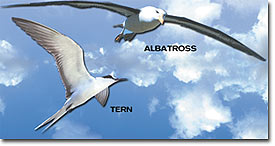 In a single feeding trip, which usually takes a month, an albatross can fly 15,000 kilometers (9,300 miles) without coming down to rest. It glides smoothly over the ocean, hardly beating its wings, using the air currents created by the waves. And in terms of straight distance, no one can compete with Arctic terns, which complete a journey each year from the North Pole to Antarctica and back—a straight-line distance of about 15,000 kilometers (9,321 miles). The complete migratory round trip is almost 40,000 kilometers (24,856 miles), equivalent to the circumference of the Earth. 5
In a single feeding trip, which usually takes a month, an albatross can fly 15,000 kilometers (9,300 miles) without coming down to rest. It glides smoothly over the ocean, hardly beating its wings, using the air currents created by the waves. And in terms of straight distance, no one can compete with Arctic terns, which complete a journey each year from the North Pole to Antarctica and back—a straight-line distance of about 15,000 kilometers (9,321 miles). The complete migratory round trip is almost 40,000 kilometers (24,856 miles), equivalent to the circumference of the Earth. 5 How and why do birds migrate? For many years, researchers have been trying to answer those questions. Although a great deal of progress has been made in this respect, the most important points are still shrouded in mystery.
How and why do birds migrate? For many years, researchers have been trying to answer those questions. Although a great deal of progress has been made in this respect, the most important points are still shrouded in mystery. Several factors prompt birds' migrations. When one or a few of these prevail, the migration marathon begins. One of these factors is the gradual shortening of the days, since change in the length of daylight has an effect on birds' hormonal system.
Several factors prompt birds' migrations. When one or a few of these prevail, the migration marathon begins. One of these factors is the gradual shortening of the days, since change in the length of daylight has an effect on birds' hormonal system.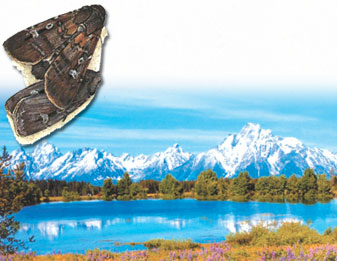 Migrating animals must accurately predict the atmospheric conditions in the lands through which they pass. Australia's bogong moth is a good example of the meteorological expertise that this requires. These moths make a journey of hundreds of kilometers to the cool Australian Alps to escape the humidity of the plains they inhabit as caterpillars.
Migrating animals must accurately predict the atmospheric conditions in the lands through which they pass. Australia's bogong moth is a good example of the meteorological expertise that this requires. These moths make a journey of hundreds of kilometers to the cool Australian Alps to escape the humidity of the plains they inhabit as caterpillars. A similar barometric sense also exists in the ears of birds. When migrating, birds are so sensitive to even the slightest change in altitude that they can continue flying within a narrow air corridor 17 meters (56 feet) high, even if their vision of the ground is obscured by clouds. If we humans had the sensitivity of a pigeon or a duck, we could tell what floor of a building we were on by the change in air pressure .
A similar barometric sense also exists in the ears of birds. When migrating, birds are so sensitive to even the slightest change in altitude that they can continue flying within a narrow air corridor 17 meters (56 feet) high, even if their vision of the ground is obscured by clouds. If we humans had the sensitivity of a pigeon or a duck, we could tell what floor of a building we were on by the change in air pressure .








 As well as a sense of direction, birds also possess navigation ability. While "sense of direction" can be defined as guessing in which direction home lies, navigation in seamanship means accurately defining one's position on a map, to bring a ship from one place to another. As already pointed out, experiments have proven birds' excellent navigational ability. In one such experiment, a manx shearwater (Puffinus puffinus) taken from its habitat on the coast of Wales and released from Boston 5,000 kilometers (3,100 miles) across the ocean, returned home in 12 days.18
As well as a sense of direction, birds also possess navigation ability. While "sense of direction" can be defined as guessing in which direction home lies, navigation in seamanship means accurately defining one's position on a map, to bring a ship from one place to another. As already pointed out, experiments have proven birds' excellent navigational ability. In one such experiment, a manx shearwater (Puffinus puffinus) taken from its habitat on the coast of Wales and released from Boston 5,000 kilometers (3,100 miles) across the ocean, returned home in 12 days.18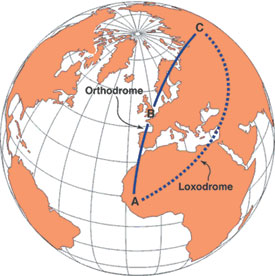
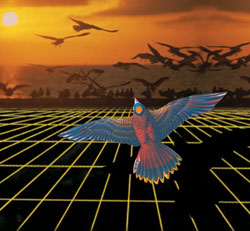



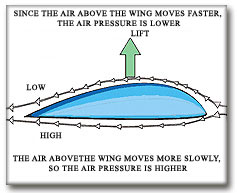
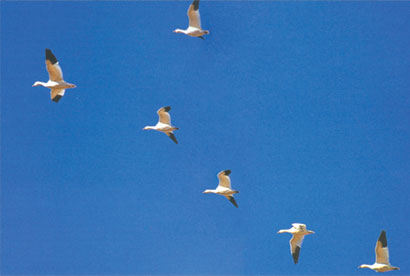

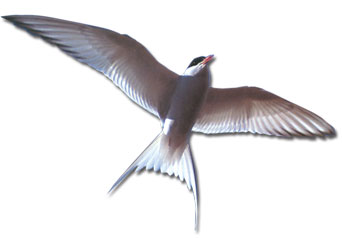 Species of birds that migrate have longer wings than non-migratory ones. This reduces wing-tip drag and creates a more effective lift as well as a more efficient wing area to body weight ratio.
Species of birds that migrate have longer wings than non-migratory ones. This reduces wing-tip drag and creates a more effective lift as well as a more efficient wing area to body weight ratio.
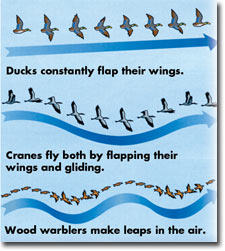

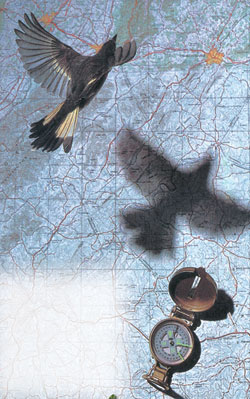


 Living in a number of habitats ranging from polar icecaps to tropical regions, some of these birds migrate great distances. Others make long journeys merely to forage for food. For instance, a male albatross (Diomedea exulans) does a round trip of more than 15,000 kilometers (9,300 miles) in search of food, while his partner is on incubation duty. At first, you may find it hard to believe a journey of so many thousands of kilometers, but some of the larger seabirds travel even greater distances.
Living in a number of habitats ranging from polar icecaps to tropical regions, some of these birds migrate great distances. Others make long journeys merely to forage for food. For instance, a male albatross (Diomedea exulans) does a round trip of more than 15,000 kilometers (9,300 miles) in search of food, while his partner is on incubation duty. At first, you may find it hard to believe a journey of so many thousands of kilometers, but some of the larger seabirds travel even greater distances.
 Bats are nocturnal mammals, of which there are as many as 900 different species. They spend the winter in caves or mines, since these places supply a humid atmosphere that never falls below freezing, factors necessary for hibernation, where bats can pass the winter in a torpid state.
Bats are nocturnal mammals, of which there are as many as 900 different species. They spend the winter in caves or mines, since these places supply a humid atmosphere that never falls below freezing, factors necessary for hibernation, where bats can pass the winter in a torpid state.
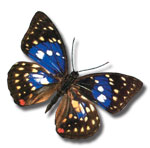 Migration of butterflies and moths may be seen insignificant, but their migrating swarms sometimes number in the millions—and under some circumstances, it takes a few generations to complete the migratory circuit. Temperate-zone butterflies tend to migrate to find feeding grounds, while tropical butterflies like the monarch migrate towards the rainy regions that suit their needs.33
Migration of butterflies and moths may be seen insignificant, but their migrating swarms sometimes number in the millions—and under some circumstances, it takes a few generations to complete the migratory circuit. Temperate-zone butterflies tend to migrate to find feeding grounds, while tropical butterflies like the monarch migrate towards the rainy regions that suit their needs.33 In the temperate zone, there are few areas with flowers for butterflies to feed on, so these delicate little insects must migrate to reach their best feeding grounds. They will fly in a straight line to a flowery meadow, but on arriving they change their behavior and act as though they live there. They feed from the flowers, mate, and the females lay their eggs. But their idyllic meadow life lasts only a short time. Within a few minutes or several days, the butterflies leave the field.
In the temperate zone, there are few areas with flowers for butterflies to feed on, so these delicate little insects must migrate to reach their best feeding grounds. They will fly in a straight line to a flowery meadow, but on arriving they change their behavior and act as though they live there. They feed from the flowers, mate, and the females lay their eggs. But their idyllic meadow life lasts only a short time. Within a few minutes or several days, the butterflies leave the field. An individual butterfly heading east in the morning will still be flying east when evening falls. At the start of the journey, it takes its direction from the Sun, but does not subsequently alter its course as the Sun's position changes. Consequently, the butterfly must know that the Sun changes its position, and that if it changes its own course accordingly, it will arrive at the wrong place. It must also know the right and the wrong destinations for itself, and what direction will take it to the correct one. Each butterfly possesses all this knowledge, but by itself, this knowledge is not enough. Each butterfly must evaluate this in relation to its location and make a decision. Of course it is not rational to think that all of this depends on a little butterfly's ability to judge. The reality is that God has created all the characteristics they need to carry on with their lives.
An individual butterfly heading east in the morning will still be flying east when evening falls. At the start of the journey, it takes its direction from the Sun, but does not subsequently alter its course as the Sun's position changes. Consequently, the butterfly must know that the Sun changes its position, and that if it changes its own course accordingly, it will arrive at the wrong place. It must also know the right and the wrong destinations for itself, and what direction will take it to the correct one. Each butterfly possesses all this knowledge, but by itself, this knowledge is not enough. Each butterfly must evaluate this in relation to its location and make a decision. Of course it is not rational to think that all of this depends on a little butterfly's ability to judge. The reality is that God has created all the characteristics they need to carry on with their lives. Even the most durable pocket compass loses its sensitivity over time due to electromagnetic effect. However, the direction finding ability of these little butterflies, which is such an important aspect of their lives, is not damaged by external influences and does not let them down in the midst of their journey. God has created all life forms perfectly. In a verse of the Qur'an, God reveals the following about His creation of creatures:
Even the most durable pocket compass loses its sensitivity over time due to electromagnetic effect. However, the direction finding ability of these little butterflies, which is such an important aspect of their lives, is not damaged by external influences and does not let them down in the midst of their journey. God has created all life forms perfectly. In a verse of the Qur'an, God reveals the following about His creation of creatures:
 Our Lord's infinite intelligence and the perfection of his creation are also evident in butterflies. To attempt to overlook or deny this fact is a waste of effort. In a verse of the Qur'an, God gives examples of such denial in the past:
Our Lord's infinite intelligence and the perfection of his creation are also evident in butterflies. To attempt to overlook or deny this fact is a waste of effort. In a verse of the Qur'an, God gives examples of such denial in the past: In different phases of its life, the body structure of the monarch changes. At the larval, pupal and mature (or imago) stages, the butterfly shows completely different structure, size, color, habitat, behavior and biological systems.
In different phases of its life, the body structure of the monarch changes. At the larval, pupal and mature (or imago) stages, the butterfly shows completely different structure, size, color, habitat, behavior and biological systems.


